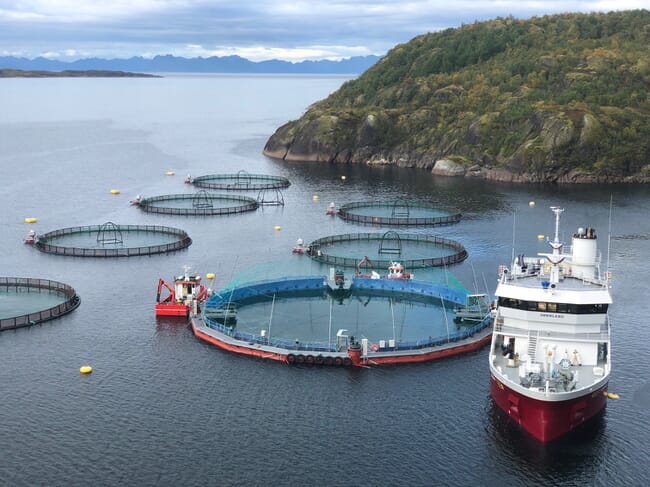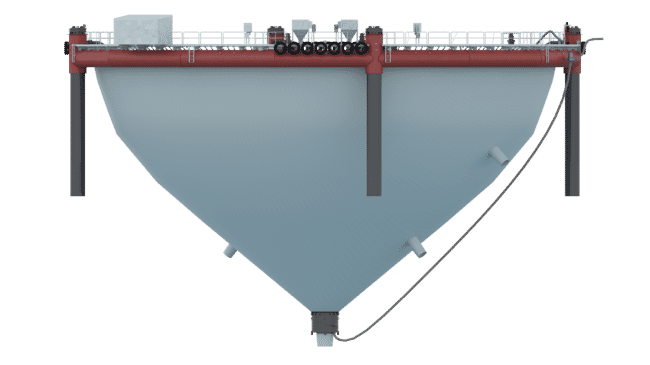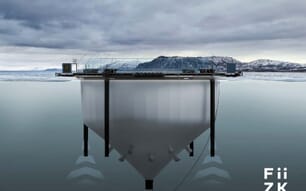The walls of the 160m-diameter Flexifarm prototype, which is sited at their Horsvågen site in northern Norway, are made of strong and flexible composite, minimising the risk of escapes. Water is pumped into the pen from a depth of 13m, in theory preventing sea lice from getting into the system.

“We have been working on this project for a long time, and we are happy that we now are ready to put fish into the pen,” says Frode Holmvaag, Cermaq’s manager in Nordland. “This is new technology to us, and it will be very interesting to follow the growth and development of the fish in the new containment system.”
The system, which has a volume of 10,400 m3, has been constructed in partnership with Botngaard and Serge Ferrari, and is certified for locations with a significant wave height of up to two metres, meaning it could be used at most existing marine sites in Norway.
“The delivery and start-up of the closed cage in Horsvågen mark a milestone for Botngaard and our development programme for closed cages. We will now work together with Cermaq and our industry partners to further improve the technology and daily operations of the cage,” says Magnus Stendal, Botngaard’s system delivery manager in Botngaard.

Serge Ferrari, world leader in innovative flexible materials, has developed the membrane wall that makes the containment system flexible and safe.
“After six years spent on R&D on various topics such as non-toxic formulation, as little elongation as possible and excellent lifetime, Serge Ferrari has come up with a new membrane dedicated to flexible closed cages: our Biobrane Aqua 2050. This highly secure fabric gives security against fish escape,” says Gabriel Faysse, from Serge Ferrari.
Looking ahead, Cermaq will cooperate closely with a variety of researchers to optimise the new closed containment system.
“There are still a lot of things we don’t know about closed containment systems. We see that closed containment systems in the ocean can play an important role in the aquaculture industry in the future, but it still requires further development,” says Harald Takle, from Cermaq’s R&D department. “This is why we have applied for development licenses with the FlexiFarm concept, which takes closed containment systems a giant step further as it will include cost-effective water treatment against infections and allow harvest-scale production in more exposed areas,” says Takle.



